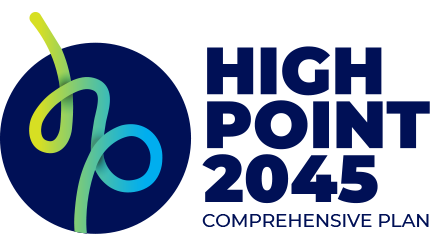3. Create a Community Reinvestment Fund (CRF) or revolving loan fund and ensure annual funding allocations based on need
Strategy Actions
Years of minimal investment in the city’s neighborhoods has taken its toll, particularly for the core neighborhoods and those neighborhoods generally located south of the downtown area (or south/southeast of the rail line). These neighborhoods suffer from a combination of low household incomes, lack of development activity, and a low rate of home ownership. Market demand is weak in this area and will require municipal intervention.
By contrast, neighborhoods to the north generally have higher median household incomes. Despite this, there remain neighborhoods to the north that exhibit similar patterns of weak market demand.
A Community Reinvestment Fund should be a line item in the city’s general fund with distribution to Census Tracts based on need. Its structure and guardrails should be created with input from city department leaders and the Citizens Advisory Committee (CAC) to tailor a fund that addresses the varied needs of each census tract. Participatory Budgeting, where neighborhood residents are allowed to vote on small projects, has been used in Greensboro and could be an option for consideration for the CRF. Possible municipal investment opportunities might range from homeowner rehabilitation grants or loans to similar incentives for landlords to update outdated apartment complexes. The CRF should be flexible enough to also consider funding for park or other recreational amenities, sidewalks and/or trails, or even basic road and infrastructure needs.
The city could instead consider creating a revolving loan fund that includes private sector investors as well as non-profit organizations.
Source: This housing demand typology was produced using Z-scores for the following measurements of demand from the Census Bureau ACS 2021 5-year estimates: median home value, median gross rent, chronic vacancy (or “vacant,other”), median family income, and the concentration of households receiving SSI and/or public assistance.
Connections to other planning efforts
The City’s current budget, Adopted Budget FY 23 – 24, includes Strategic Priorities that specifically reference reducing blight and increasing the quality and quantity of housing within the City.
Implementation Timeline for this Strategic Initiative
Success Measures
Target Year/Range
A new Community Reinvestment Fund (CRF) or revolving loan fund is created
2028
Annual funding of projects through CRF/revolving loan commences
2029
Strategic Initiatives for this Priority
Strategic initiatives refer to carefully planned actions or projects that the city will need to undertake to achieve this plan’s desired outcomes for each of the Big Things.
Learn more about these and other Strategic Initiatives in Our Way Forward


